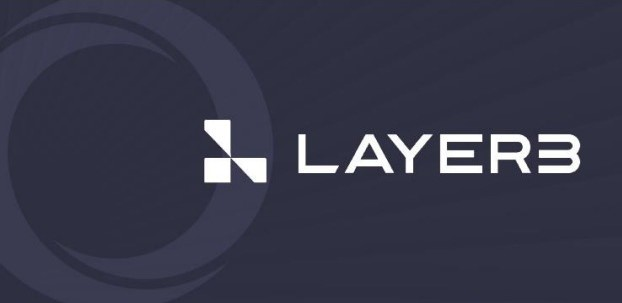Exploring the Layer3 Bridge Wallet: A Comprehensive Guide

Layer3 In the ever-evolving world of blockchain technology and digital finance, Layer3 Bridge Wallets have emerged as a significant innovation, bridging gaps and enhancing the functionality of decentralized applications. This article delves into the intricacies of Layer3 Bridge Wallets, exploring their features, benefits, and the transformative impact they have on the cryptocurrency ecosystem.
Understanding Layer3 Bridge Wallets
Layer3 Bridge Wallets are a type of digital wallet designed to facilitate seamless interactions between different blockchain networks, particularly focusing on Layer1 and Layer2 solutions. These wallets are essential for users who engage in decentralized finance (DeFi), non-fungible tokens (NFTs), and other blockchain-based applications. The primary function of a Layer3 Bridge Wallet is to enable smooth asset transfers and communication between disparate blockchain layers, thus enhancing user experience and expanding the possibilities of blockchain technology.
Key Features of Layer3 Bridge Wallets
Interoperability Across Blockchain Networks
One of the standout features of Layer3 Bridge Wallets is their ability to bridge multiple blockchain networks. This interoperability allows users to transfer assets and data seamlessly between different Layer1 and Layer2 solutions. For instance, a Layer3 Bridge Wallet can facilitate transactions between Ethereum, Binance Smart Chain, and Polygon, ensuring that users can interact with various decentralized applications (dApps) without the need for multiple wallets.
Enhanced Security Protocols
Security is a paramount concern in the blockchain space, and Layer3 Bridge Wallets address this with advanced security measures. These wallets often incorporate multi-signature authentication, end-to-end encryption, and secure key management systems. By implementing robust security protocols, Layer3 Bridge Wallets safeguard user assets and protect against potential threats such as hacking and phishing attacks.
User-Friendly Interface
Layer3 Bridge Wallets are designed with user experience in mind. They typically feature intuitive interfaces that simplify complex processes involved in cross-chain transactions. Users can easily manage their assets, execute transactions, and interact with various dApps through a single, cohesive platform. This ease of use is crucial in encouraging broader adoption of blockchain technology.
Support for Diverse Digital Assets
These wallets support a wide range of digital assets, including cryptocurrencies, tokens, and NFTs. By accommodating various asset types, Layer3 Bridge Wallets provide users with greater flexibility in managing their holdings and engaging with different blockchain ecosystems.
Benefits of Using a Layer3 Bridge Wallet
Seamless Cross-Chain Transactions
One of the primary advantages of using a Layer3 Bridge Wallet is the ability to conduct seamless cross-chain transactions. This capability eliminates the need for intermediaries and reduces transaction times, making it easier for users to transfer assets and interact with different blockchain networks.
Cost Efficiency
Layer3 Bridge Wallets can help reduce transaction costs by minimizing the need for multiple wallet operations and conversions. Users can execute transactions directly from a single wallet, avoiding additional fees associated with converting assets between different blockchain networks.
Increased Access to DeFi and NFT Markets
With Layer3 Bridge Wallets, users gain increased access to decentralized finance (DeFi) and non-fungible token (NFT) markets across various blockchain networks. This expanded access allows users to participate in a broader range of financial activities and investments, enhancing their overall blockchain experience.
Streamlined Asset Management
Managing assets across multiple blockchain networks can be cumbersome, but Layer3 Bridge Wallets simplify this process. Users can track and manage their assets from a unified platform, reducing the complexity and effort involved in handling assets across different chains.
Challenges and Considerations
Complexity of Integration
Despite their advantages, integrating Layer3 Bridge Wallets with various blockchain networks can be complex. Developers must ensure compatibility and smooth operation across different protocols, which can be technically challenging and time-consuming.
Security Risks
While Layer3 Bridge Wallets employ advanced security measures, they are not entirely immune to risks. The complexity of bridging multiple networks introduces potential vulnerabilities, and users must remain vigilant against security threats. Regular updates and adherence to best security practices are essential to mitigate these risks.
Regulatory Uncertainty
The regulatory landscape for blockchain technology is still evolving, and Layer3 Bridge Wallets may face regulatory scrutiny in different jurisdictions. Users and developers should stay informed about regulatory developments and ensure compliance with applicable laws and regulations.
Future Prospects
The future of Layer3 Bridge Wallets looks promising as the blockchain ecosystem continues to grow and evolve. Advances in blockchain technology and increased adoption of decentralized applications will likely drive further innovation in Layer3 solutions. Enhanced interoperability, improved security measures, and user-friendly features will continue to shape the development of Layer3 Bridge Wallets, making them an integral part of the blockchain landscape.
In conclusion, Layer3 Bridge Wallets represent a significant advancement in the blockchain space, offering enhanced interoperability, Layer3 security, and user experience. By bridging gaps between different blockchain networks, these wallets enable seamless cross-chain transactions and provide users with greater access to DeFi and NFT markets. As the blockchain ecosystem continues to evolve, Layer3 Bridge Wallets will play a crucial role in shaping the future of digital finance and decentralized applications.